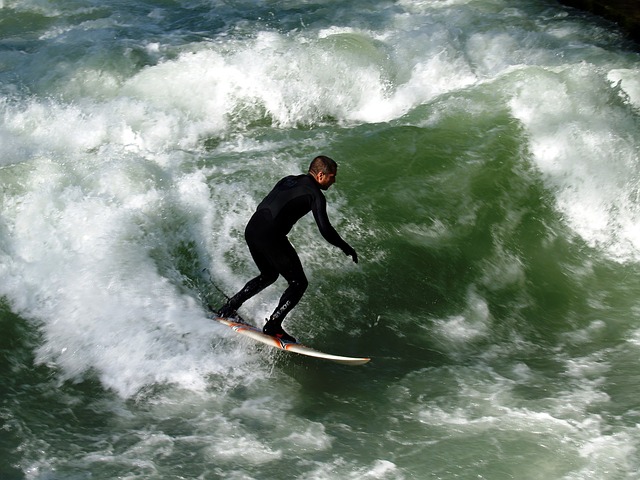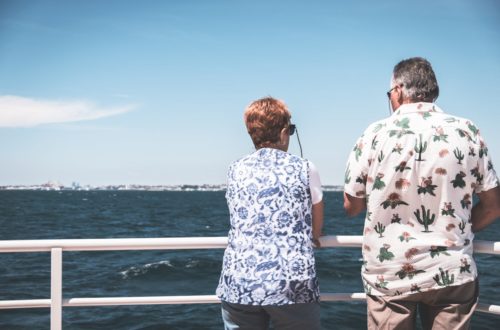5 Must Have Gadgets to Stay Safe While Having Fun on the Water

Being on the water is an exhilarating and exciting feeling; however, it is vital to have the necessary gear and gadgets to remain safe. It is easy to forget how essential safety gear is while being out on the water; however, having safety gadgets is the difference between being hurt and staying safe if an accident occurs. Before you begin wakeboarding, you should invest in these five gadgets so that you stay safe while having fun on the water.
1. Wetsuits
Before heading out into the water, you must purchase a wetsuit. Both beginners and experts wear these suits, so do not think that you do not need one if you are just starting out. Pros know to wear wetsuits for a variety of reasons. In the winter, these suits help regulate your temperature and keep you warm. In the summer, wetsuits protect your skin from the sun, especially on days that you are out in the water for extended periods of time.
Wetsuits can also protect your body in the event that you fall off your wakeboard. Hitting the water without protective gear feels much harder than you might think, so it is recommended to wear a suit to protect against bruises and injury.
There are a plethora of different styles of wetsuits as it allows you to find the right on for you. There are even short wetsuits, also referred to as shorties, that are cropped at the arms and legs for warmer temperatures. In the winter, you will likely wear a thicker wetsuit than you would in the summer. If you have an instructor, they can guide you towards purchasing the right wetsuit for your body and the season.
2. Neoprene Gloves
Neoprene gloves are important as they are made from a material that helps insulate your body to keep you warm in even the coldest temperatures. Your hands must stay warm while you are in the water during cold conditions as you could risk getting frostbite otherwise. Neoprene gloves help wakeboarders keep their hands warm while also having full function of their fingers. Standard winter gloves or mittens would not work while in the water because they would absorb water and make you even colder.
Since neoprene gloves are water-resistant, you do not have to worry about having slippery hands. Neoprene gloves are preferred over other types of gloves because the wakeboarder is less likely to slip and fall as their gloves will remain relatively dry while on the water.
Most neoprene gloves have a secure grip and are also durable, so they are unlikely to rip if caught onto any sharp edges or rocks.
3. Buoyancy Aid
While on the water, it is vital that you invest in a buoyancy aid. Buoyancy aids help you stay afloat in the water while you wait for a boat to come and pick you up. Swimming can become incredibly tiring, and even dangerous in some weather conditions. Waves can pull wakeboarders out to sea very quickly and often make it difficult to swim, which is why buoyancy aids are incredibly helpful at keeping people afloat while they wait for a boat.
In the event that you are knocked unconscious or cannot swim, a buoyancy aid will keep you floating so that you do not drown as it will keep you afloat on the surface of the water. There are many different brands and styles of buoyancy aids, so it is essential that you find one designed for your body size and that makes you feel safe.
Some advanced wakeboarders prefer wearing impact vests as they provide more protection while riding at high speeds. Impact vests protect against crashing into obstacles or the water while going at high speeds; however, they are not as buoyant as standard buoyancy aids. You should invest in a buoyancy aid that is right for its intended use as it is better to remain afloat if you go at slower speeds than purchasing an impact vest when you are unlikely to crash into the water at high speeds.
4. Helmet
Wakeboard helmets online offer a plethora of options as they vary by size, shape, and intended use. Everyone from beginners to pros should wear a helmet to protect his or her head from injury. While wakeboarding, you are traveling at a medium to high speed. Obstacles are often around which can pose a serious threat if you slip and fall or crash into an obstacle. It is vital to get used to wearing a helmet from the start as you will always need to use this safety gadget.
Keep in mind that wakeboard helmets are explicitly designed for wakeboarding and other watersports, so you cannot swap having a wakeboard helmet with a cycling helmet. Wearing a cycling helmet on the water is not safe, and it could also be quite uncomfortable.
Wakeboard helmets are lightweight and water-resistant. They also are ventilated in specific areas to allow water to smoothly flow out of them, whereas that is not the case with cycling helmets.
Most wakeboard helmets have a thin lining of neoprene, which prevents them from getting clogged with water and debris.
5. Wakeboard Bindings
Wakeboard boots, also known as wakeboard bindings, are a key part of wakeboarding. Finding a good fitting wakeboard boot will ensure that you remain safe while on the water. Some people make it a bad habit to wakeboard without wakeboard boots; however, not wearing shoes can lead to a plethora of injuries if an accident occurs. Injuries can also occur if you are wearing the wrong type of shoe as some people try to wakeboard with standard shoes and boots. The wrong shoe will not fit the wakeboard properly, and will not provide you with the proper grip.
During the winter months, you will want to invest in a wakeboard shoe that will keep you warm as it will prevent you from getting frostbite. Visiting a local wakeboarding shop is the best way to find a shoe that is right for your needs.
Would you like to receive similar articles by email?





